Looking for a nice day trip from Barcelona? Discover the colorful city of Sant Joan Despí. This hidden Catalan gem is a picturesque town tucked away in the outskirts of Barcelona. Sant Joan Despí is filled with beautiful architecture, making it an ideal destination for travelers seeking an authentic cultural experience. From its rich historical heritage to the remarkable architecture that graces its streets, Sant Joan Despí invites you to explore its treasures. In this blog post, I’ll delve into the town’s fascinating history, guide you on convenient train and bus routes from Barcelona, and unveil the notable buildings that contribute to the town’s unique charm.
I’ve also created a Google Maps route that is free to use. You can find it here, and you’ll have all the notable buildings bookmarked so you can easily find them.
The history of Sant Joan Despi
Sant Joan Despi is mostly known for its Art Deco buildings. From 1926 on Josep Maria Jujol was the official architect of the town, he designed most of the beautiful buildings that you probably want to visit there. Jujol was a Catalan architect that often worked together with Antoni Gaudi.
You can also find a small medieval chapel and the Saint John the Baptist Church. In the 1960’s Sant Joan Despi was a popular area where the richer people of Barcelona would spent their holidays in cottages. But nowadays you can find moslty modern, bigger buildings there.
Getting to Sant Joan Despi from Barcelona
Embarking on a journey from Barcelona to Sant Joan Despí is a breeze, thanks to the well-connected train and bus options available. Boarding a train from Placa de Catalunya station takes you to Sant Joan Despí in a short 20-minute ride, allowing you to enjoy scenic vistas of the surrounding landscape along the way. If you prefer the convenience of buses, a comfortable ride from Barcelona’s Plaza de Espanya will transport you to Sant Joan Despí in approximately 60 minutes. With frequent departures and efficient schedules, you’ll find no shortage of options to plan your visit seamlessly.
Both the bus and the train work with the same card as you use for the metro in Barcelona. So I would advise you to buy a 10 trip card for your stay in Barcelona. This way your train ride to Sant Joan Despi will cost you less than €1,50 each.
The most Notable Buildings in Sant Joan Despi
Sant Joan Despi is a lovely quiet little town that is real pleasant to stroll around in, but there are some buildings that stand out. Below I’m sharing the most notable buildings in Sant Joan Despi. You can all find them bookmarked on this convenient Google Maps list.
Torre de la Creu
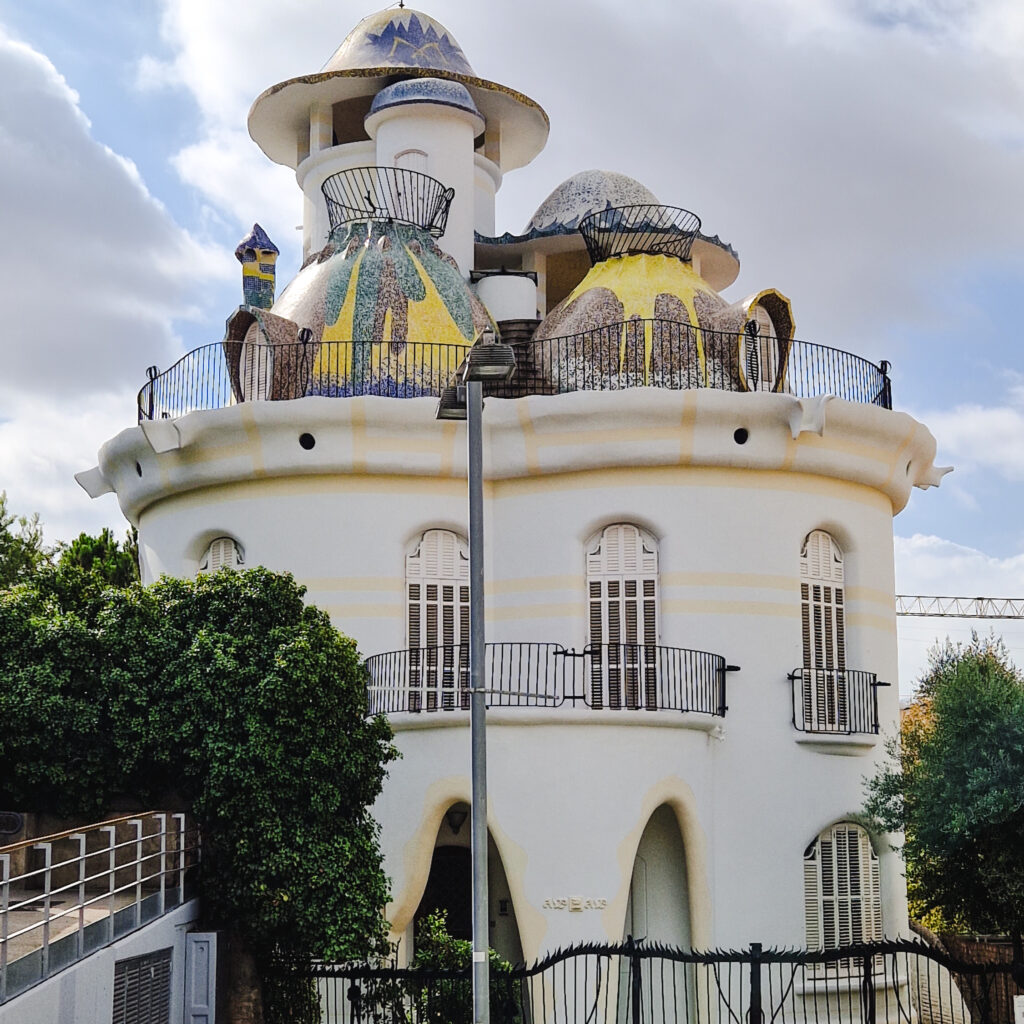
Straight when you exit the train station at Sant Joan Despi, you’ll see the Torre de la Creu. The building was designed by Josep Maria Jujol and was finished in 1916. It was originally built as a summer residence for his aunt. Because the rooftop looks a bit like a basket of eggs, the building is often referred to as the Egg Tower.
Vil.la Elena

Vil.la Elena, and the neighboring Villa Jose, can be found right next to Torre de la Creu, so also close to the train station. They’re built in 1910-1911 and are very colorful. Did you know that you can even sleep in Vil.la Elena as one of the rooms is rented out via airbnb.
Centre Jujol – Can Negre
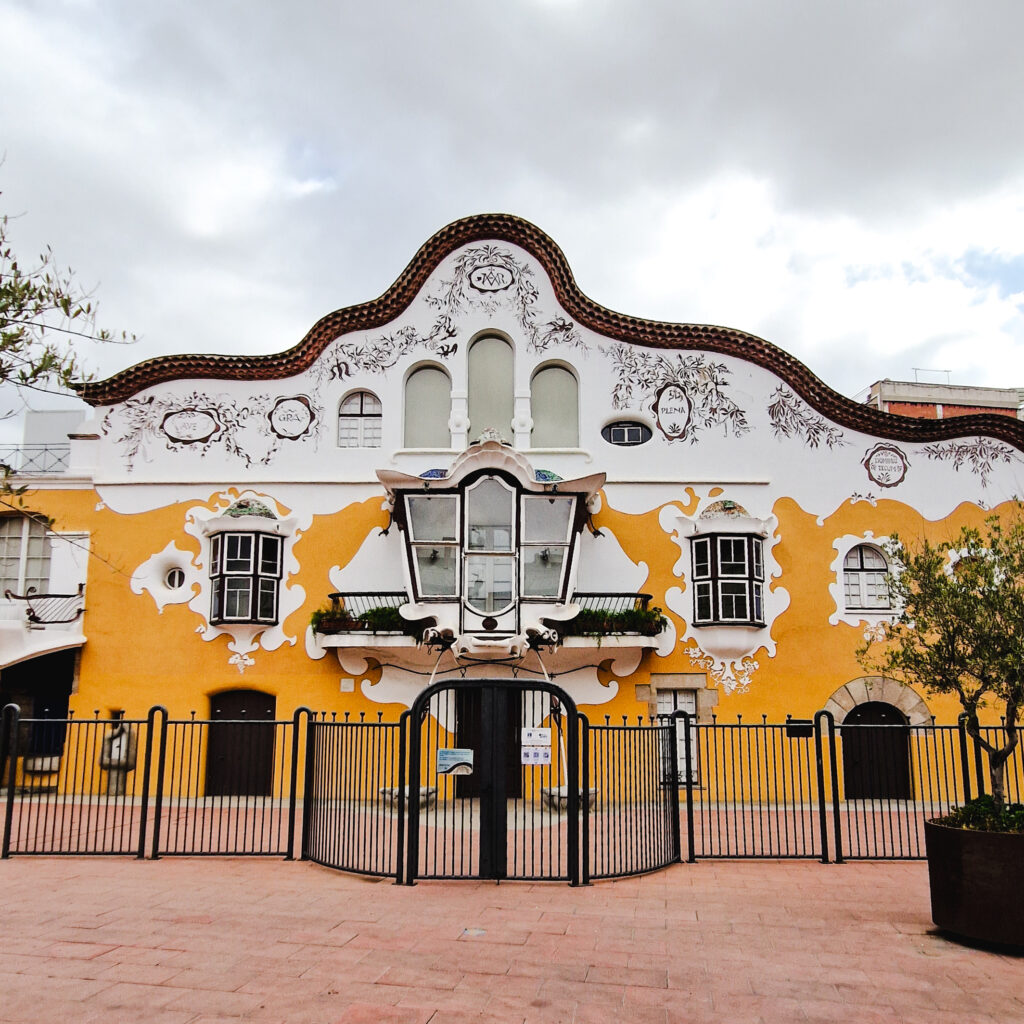
Can Negre was build in the 17th century and was a Catalan farmhouse (a Masia), Josep Maria Jujol renovated it between 1915-1930. I love the bright yellow-orange color of this house, it’s probably my favorite building in the colorful city of Sant Joan Despi.
Casa Serra-Xaus and Torre Jujol

These two houses are located right opposite each other on Carrer de Lobregat. The Casa Serra-Xaus and the Torre Jujol are both also designed by Josep Maria Jujol, in the 1920’s and the 1930’s. Both houses are now privately owned so it’s not possible to visit them.
Església de Sant Joan Despí
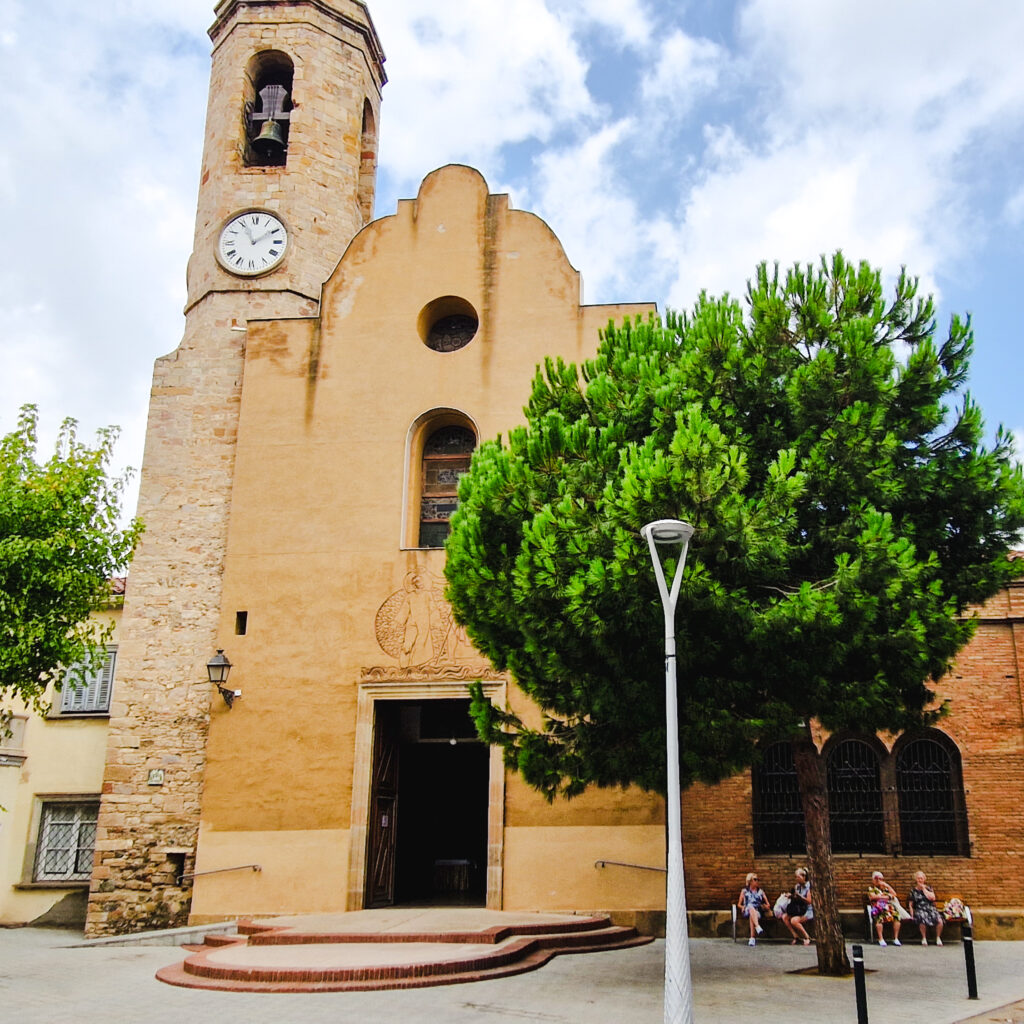
The Església de Sant Joan Despí (in Spanish: Iglesia de Sant Joan Despi), is one of the oldest buildings in the area. The origins date back to the 11th century. Over the centuries many restorations took place, you can see some differences in the periods when you look at the facade.
Masia Can Po Cardona
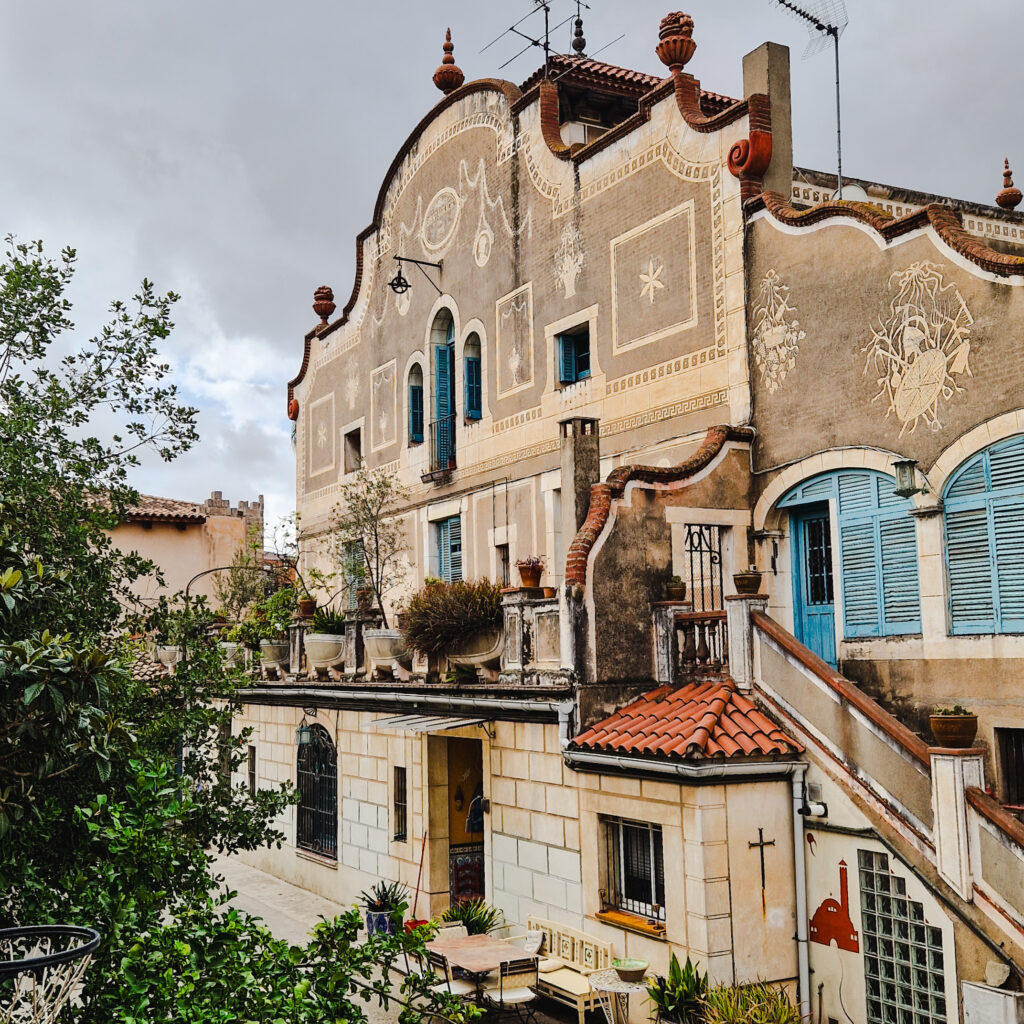
Can Po Cardona is another Masia, a Catalan farmhouse. The original farmhouse dates back from 1750 and was transformed in 1927 towards a new, more bourgeois style, by Juli M. Fossas. The facade was renovated, an interior staircase topped by a tower was built and the right side part was completed.
Street-art at Carrer Francesc Macià
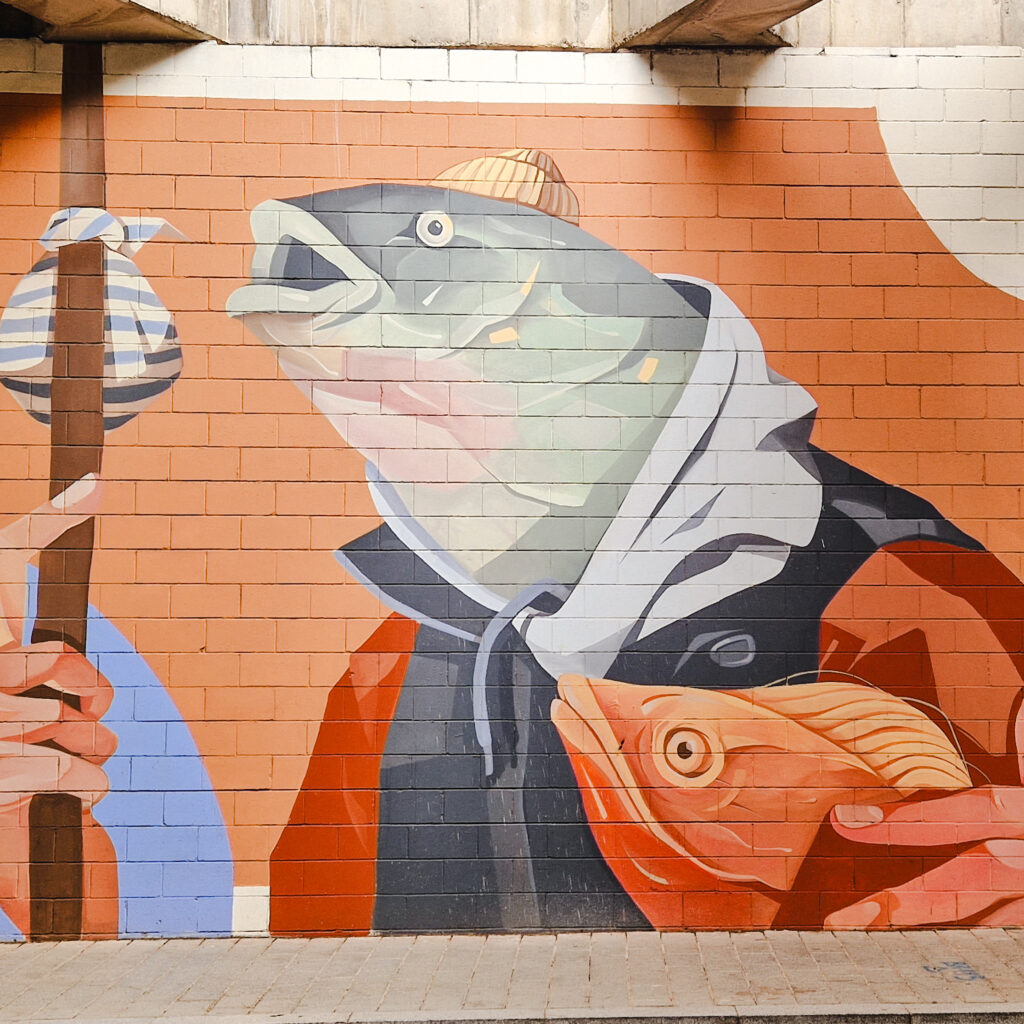
If you walk out of the town, towards the Estadi Johan Cruyff and the FC Barcelona training grounds, you’ll come across this beautiful graffiti. You can find this and more works from the artist in the tunnel at Carrer Francesc Macià, check my Google Map for the exact location.
Parc de Torreblanca
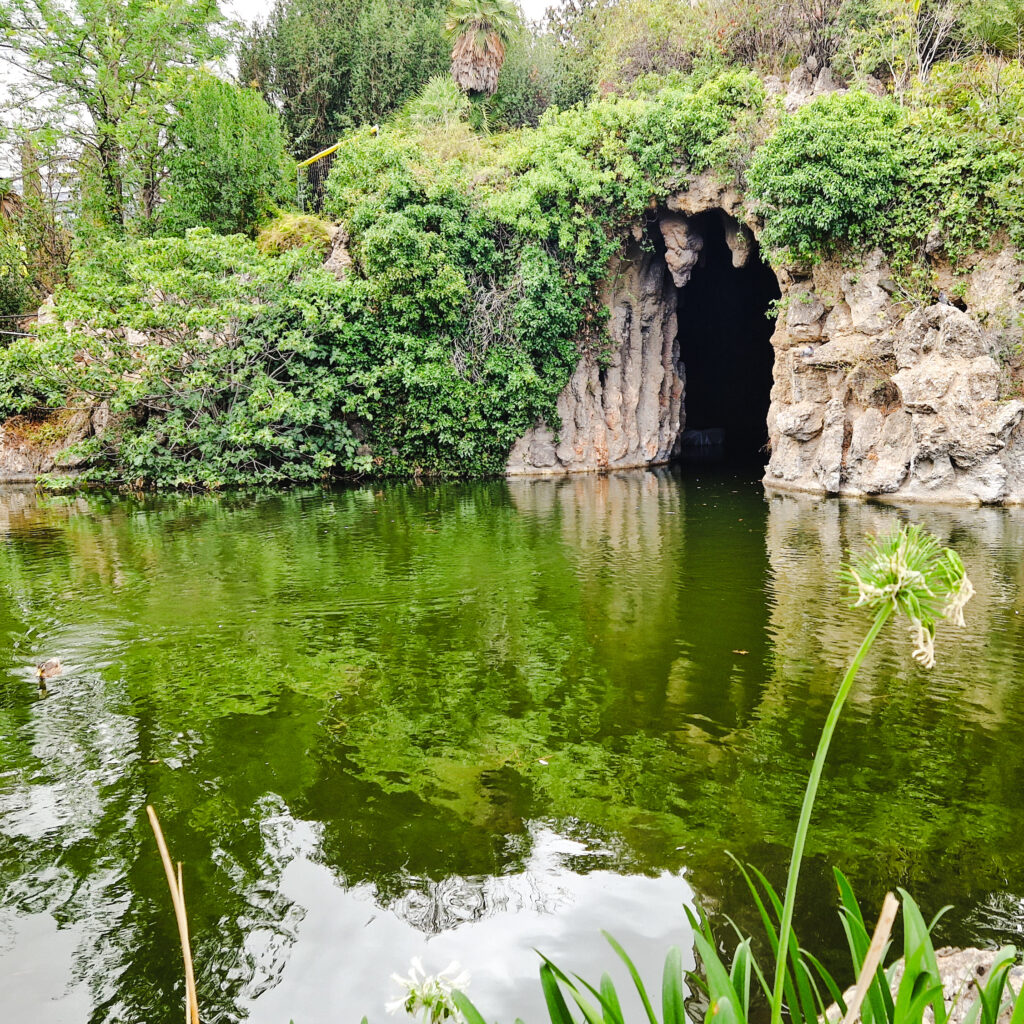
Parc de Torreblanca is located just outside Sant Joan Despi, but it’s worth the walk. This quiet park is relatively large and has something to enjoy for everyone. There’s a playground, a pond with ducks, walking lanes and even a maze.
You might also like my Day trip from Barcelona: the Montserrat Monastery.

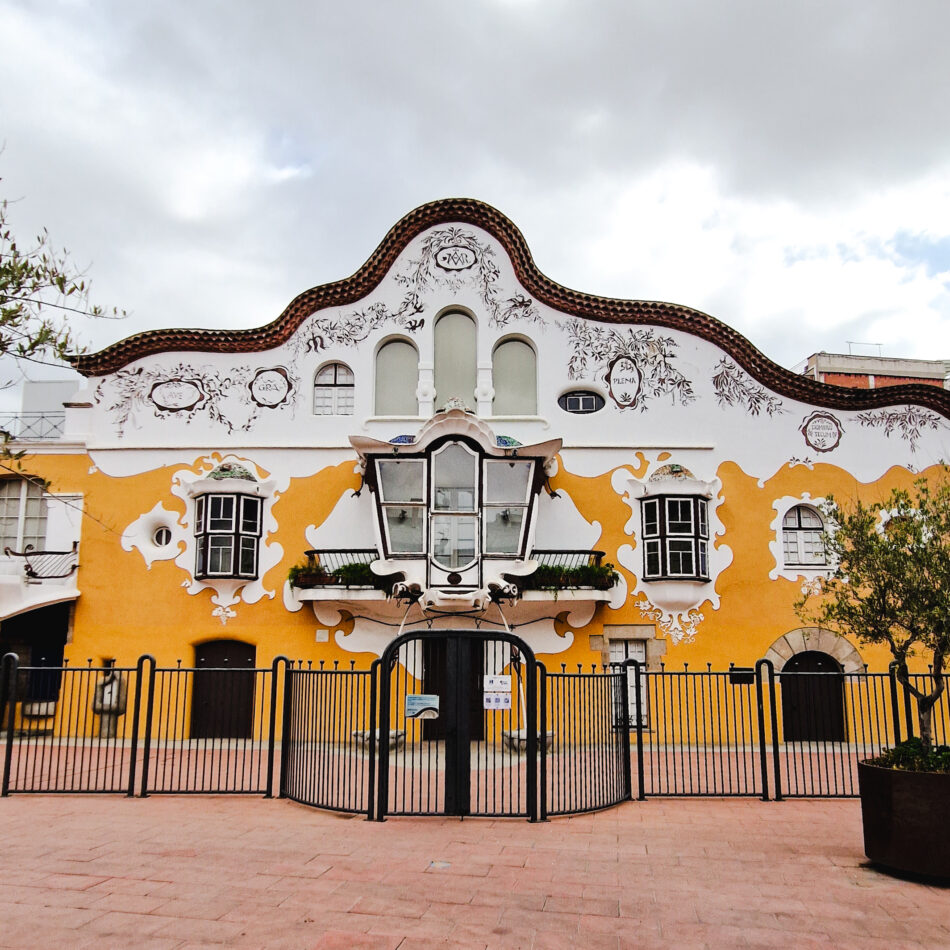
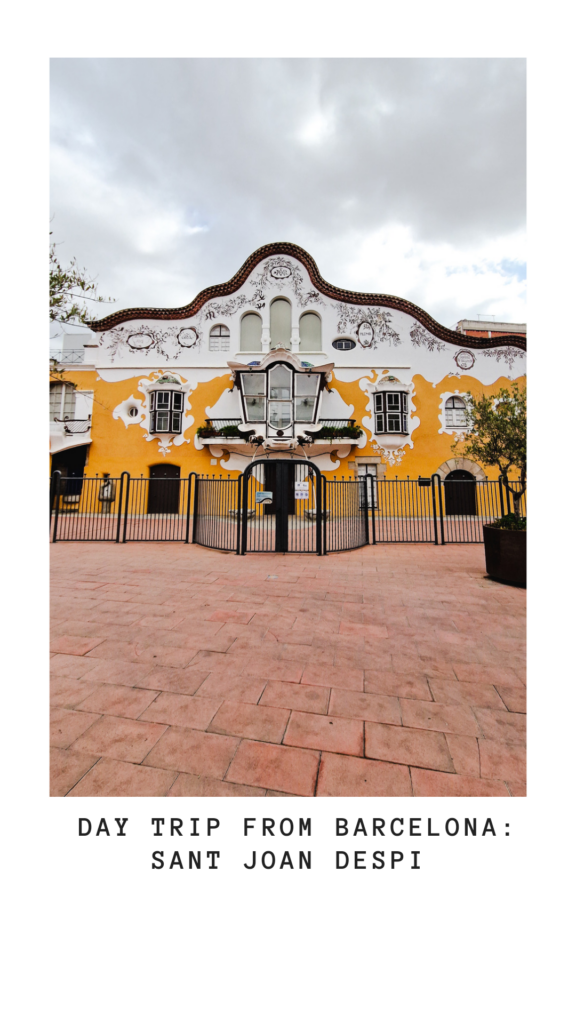

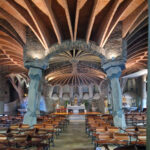
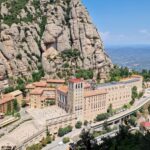







Pingback: Barcelona Off the Beaten Track - Anne Travel Foodie